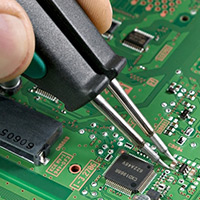

Understanding Low-E3 Glass Advantages and Applications
In the realm of modern architecture and construction, the use of low-emissivity (Low-E) glass has become a pivotal factor in energy efficiency, comfort, and sustainability. Among the various types of Low-E glass available in the market, Low-E3 glass stands out due to its unique properties and benefits.
Low-E3 glass is designed with a special coating that reflects infrared light, helping to keep heat inside during the winter while preventing excessive heat from entering during the summer. This dual functionality is essential for maintaining a comfortable indoor environment throughout the year. By optimizing energy consumption, buildings utilizing Low-E3 glass can significantly reduce heating and cooling costs, contributing to lower utility bills and a lesser environmental footprint.
Understanding Low-E3 Glass Advantages and Applications
In addition to its thermal benefits, Low-E3 glass also helps protect interior furnishings and artworks from harmful ultraviolet (UV) rays. The coating on Low-E glass effectively blocks a significant percentage of UV rays, which can cause fading and deterioration over time. This feature makes Low-E3 glass an ideal choice for museums, galleries, retail spaces, and homes where the preservation of aesthetics is a priority.

Moreover, Low-E3 glass can enhance the overall aesthetic appeal of a building. With its ability to allow natural light to permeate while minimizing glare, occupants enjoy a bright, inviting space devoid of harsh lighting conditions. Furthermore, the clarity and transparency of Low-E3 glass do not compromise the view, allowing inhabitants to connect with the outside environment without the typical drawbacks of uncontrolled heat or UV exposure.
Installation of Low-E3 glass can be straightforward, as it is available in various forms, including double-glazed and triple-glazed units. These configurations improve insulation and soundproofing, making Low-E3 glass an excellent solution for urban dwellings subjected to noise pollution.
As energy-efficient building practices gain traction worldwide, strategies such as the incorporation of Low-E3 glass into new constructions or renovations become increasingly integral. Governments and regulatory bodies are recognizing the importance of energy-efficient buildings in achieving climate goals, leading to potential tax breaks and incentives for projects using Low-E technologies.
In conclusion, Low-E3 glass represents a remarkable innovation in the building materials sector, providing exceptional thermal performance, UV protection, and aesthetic enhancement. As society moves towards greener and more sustainable living, the adoption of Low-E3 glass is likely to continue growing, proving transformative for energy efficiency and comfort in buildings. Through its myriad benefits, Low-E3 glass not only contributes to lower energy costs but also aids in preserving the integrity of furnishings and promoting the well-being of occupants, making it a superior choice for modern construction.